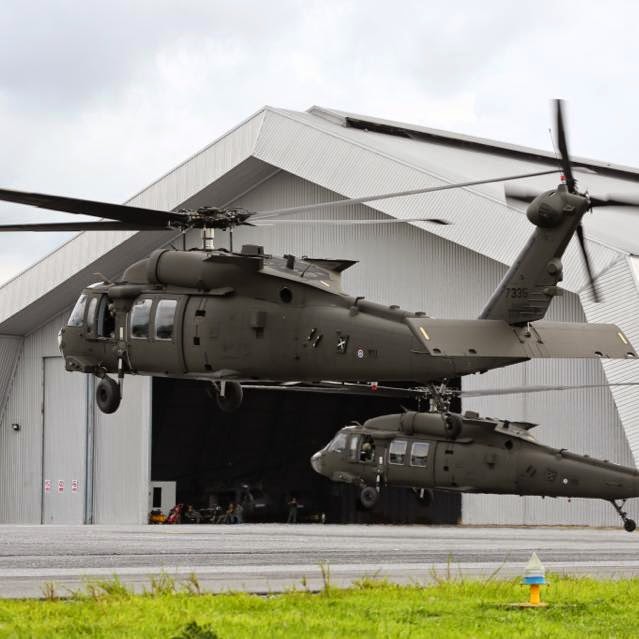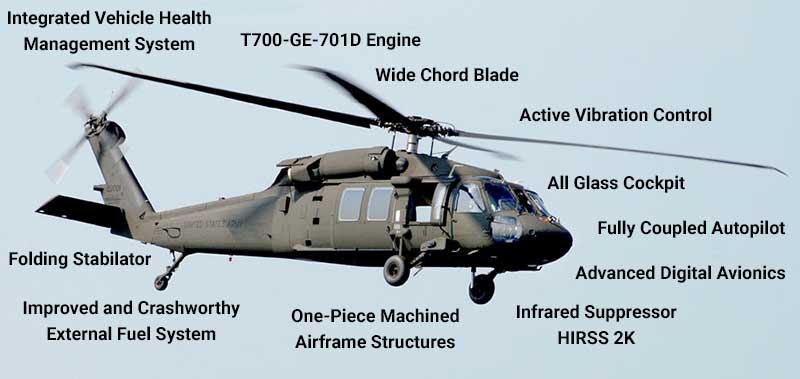Flying High: UH 60 Helicopter Security Protocols You Need To Know
Navigating Uh 60 Helicopter Regulations and Compliance Requirements

Regulatory Framework Overview
The regulatory structure controling UH-60 helicopter operations encompasses a complex collection of requirements and guidelines established by aviation authorities. These laws are made to make certain the secure and reliable procedure of UH-60 helicopters in numerous atmospheres. The Federal Aviation Administration (FAA) plays a main role in developing and applying these laws, which cover a large range of operational facets, including airworthiness standards, pilot credentials, maintenance requirements, and functional procedures.
Compliance with these laws is essential for helicopter operators to keep the highest degree of safety and security and operational integrity. Failing to adhere to these policies can result in significant repercussions, including crashes, injuries, and regulatory assents. As a result, helicopter operators need to stay notified about the current regulatory advancements and ensure that their procedures are in complete compliance with all relevant guidelines and criteria.
Airworthiness Inspections and directives
In the middle of the governing structure controling UH-60 helicopter procedures, an important emphasis exists on conformity with Airworthiness Directives and conducting comprehensive assessments to maintain security requirements and functional dependability. Airworthiness Regulations (Advertisements) are provided by air travel authorities to attend to harmful problems in airplane, consisting of the UH-60 helicopter, and mandate particular actions to be taken by operators or owners. Conformity with Advertisements is compulsory, and failure to stick to these directives can result in serious effects, consisting of grounding of the airplane.
Regular examinations are critical to making certain the airworthiness of UH-60 helicopters. By adhering to a rigorous evaluation routine, operators can identify and deal with possible problems without delay, thus boosting the safety and dependability of UH-60 helicopter procedures.
Pilot Certifications and Training

Pilot training for UH-60 helicopters is thorough and covers a wide variety of subjects, Resources including aircraft systems, emergency situation treatments, navigating, and mission-specific training. Furthermore, pilots undertake simulator training to practice numerous emergency circumstances in a regulated atmosphere. This training helps pilots create the required abilities to deal with tough situations properly.


In addition, ongoing training and professional development are important for UH-60 pilots to stay existing with the current laws, modern technology, and finest methods. By buying pilot qualifications and training, drivers can improve security, maximize efficiency, and make sure compliance with regulatory needs in the procedure of UH-60 helicopters.
Operational Limitations and Needs
Pilot credentials and training offer as the foundation for recognizing the operational limitations and needs related to UH-60 helicopter operations (uh 60). These functional limitations are established to guarantee the safety of the staff, travelers, and the airplane itself. Functional limitations might include factors such as weather, weight constraints, altitude restraints, and operational borders. It is vital for pilots to be well-versed in these constraints to make informed choices during trip operations. In addition, compliance demands, such as adhering to certain flight paths, interaction protocols, and emergency situation procedures, are necessary for maintaining functional safety and regulative conformity. Pilots should remain current with all operational constraints and requirements with normal training, briefings, and assesses to mitigate dangers and make certain safe and effective UH-60 helicopter operations. By focusing on adherence to these functional guidelines, pilots can improve the total safety and effectiveness of their objectives while promoting regulatory requirements.
Emergency Treatments and Conformity Screening
Efficient emergency procedures and extensive compliance testing are crucial components of maintaining functional safety and security and governing adherence in UH-60 helicopter procedures. Emergency procedures incorporate methods for different situations, including engine failings, fires, hydraulic problems, and much more. Pilots and crew members have to be fluent in these procedures to react quickly and effectively in emergencies. Normal conformity screening makes sure that the helicopter satisfies all governing needs established forth by air travel authorities. This testing entails complete assessments, checks, and assessments to confirm that the airplane is airworthy and in compliance with all applicable guidelines.
In addition, compliance testing may include simulations of emergency situation circumstances to evaluate the team's feedback and the helicopter's efficiency under stress. By prioritizing emergency procedures and compliance testing, UH-60 operators can alleviate threats and show their dedication to safety and security and governing conformity.
Verdict
Finally, adherence to regulatory framework, compliance with airworthiness directives, pilot qualifications and training, operational limitations, and emergency procedures are essential for navigating websites the regulations and requirements of operating a UH-60 helicopter. uh 60. It is essential for operators to prioritize safety and ensure full conformity with all relevant laws to keep the airworthiness and functional stability of the aircraft
Navigating the regulatory landscape bordering UH-60 helicopter procedures requires a nuanced understanding of the intricate internet of regulations and conformity demands.Compliance with these regulations is essential for helicopter drivers to preserve the greatest levels of safety and security and operational stability.Amidst the governing structure regulating UH-60 helicopter operations, a crucial emphasis exists on compliance with Airworthiness Directives and conducting detailed examinations to maintain safety standards and functional dependability.Effective emergency situation procedures and detailed conformity testing are essential elements of maintaining functional safety and governing adherence in UH-60 helicopter operations. Normal compliance screening makes sure that the helicopter meets all governing requirements dig this established forth by aviation authorities.